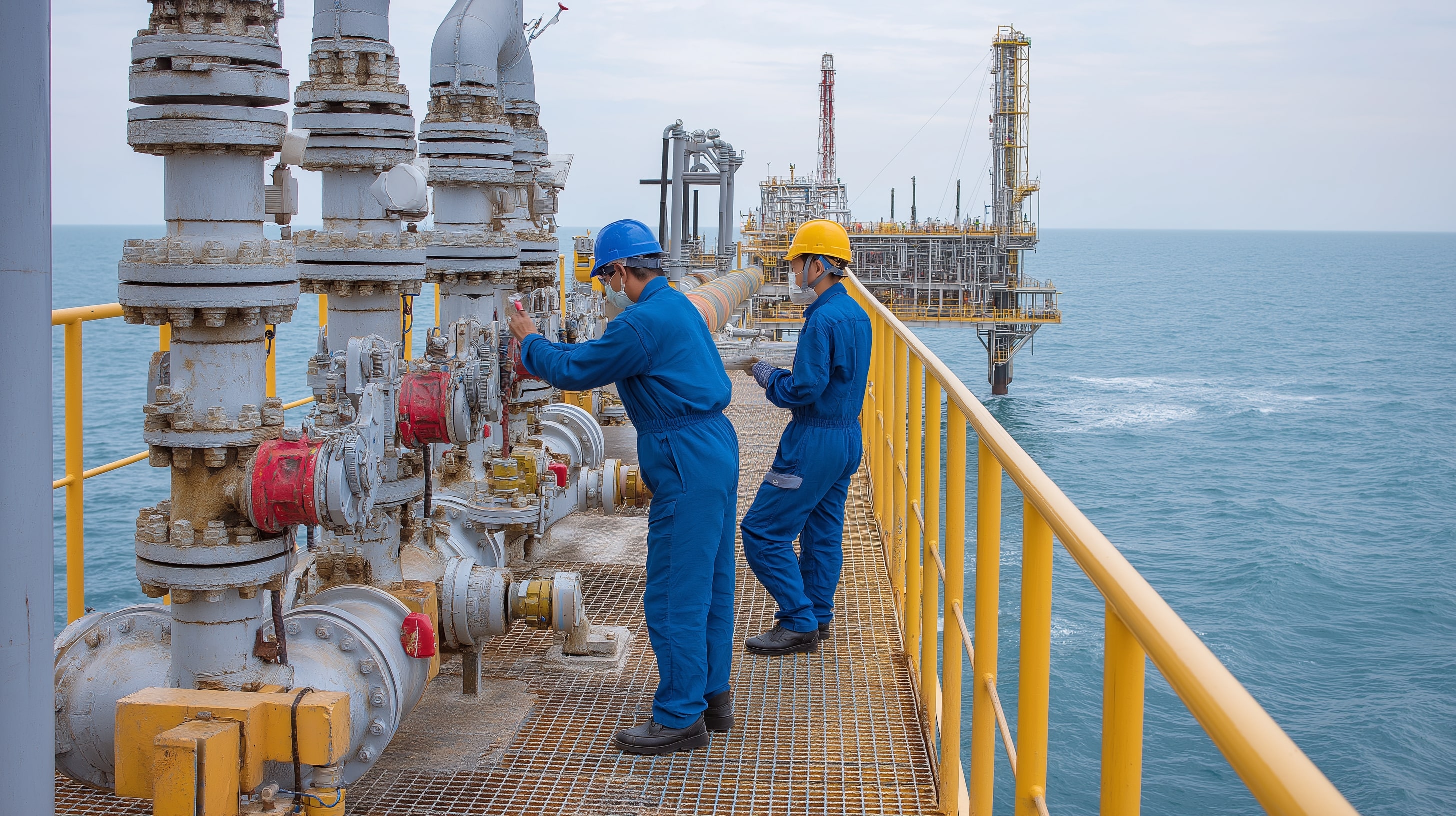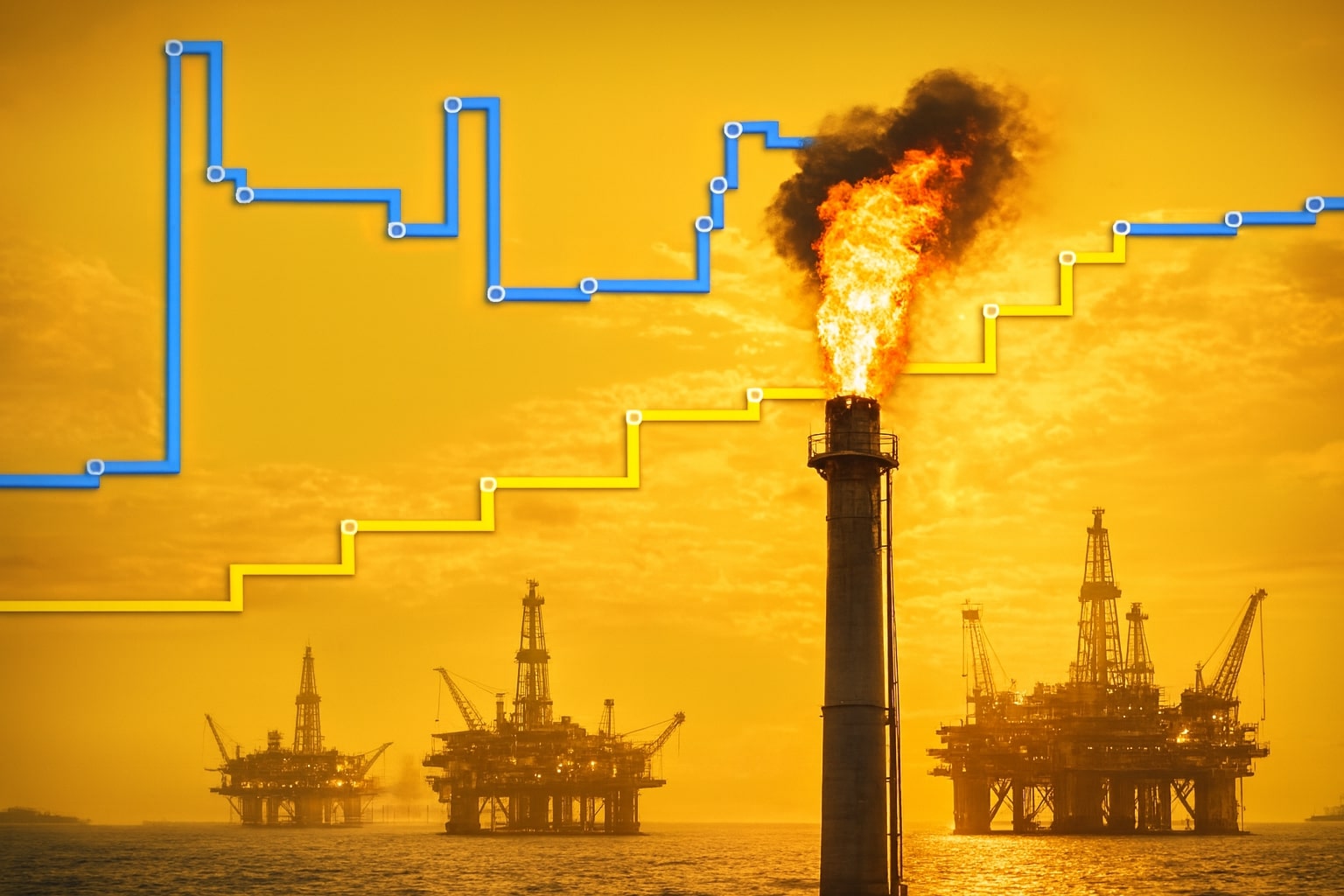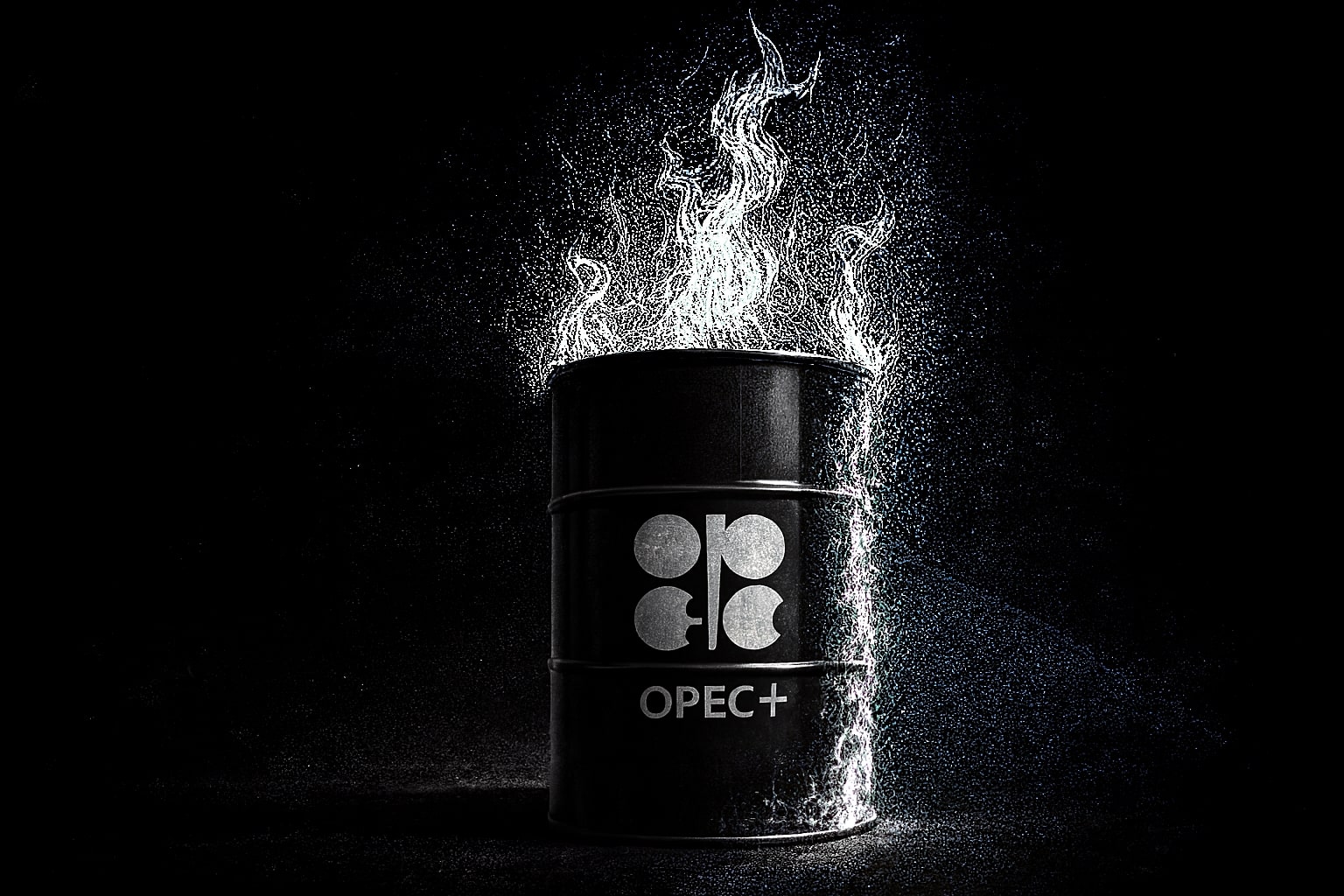
Natural Gas Price (NG=F) Climbs to $4.62 as Winter Demand and Record LNG Exports Fuel Bullish Momentum
U.S. natural gas prices consolidate above $4.60 per MMBtu with supply tightening, exports surging 24% year-over-year, and utilities preparing for winter rate hikes across the Northeast | That's TradingNEWS
Natural Gas (NG=F) Consolidates Near $4.62 as Winter Demand Rises and LNG Exports Tighten Global Supply
Natural Gas Holds Gains as Futures Stay Above $4.60 With Upward Momentum Building
Natural Gas (NG=F) traded around $4.62 per MMBtu on Friday, up 3.35%, maintaining its upward bias as traders positioned for stronger seasonal demand and ongoing supply constraints. The commodity has stabilized after an early November rally, consolidating between $4.55 and $5.00, with momentum supported by winter heating expectations and surging U.S. liquefied natural gas (LNG) exports. The short-term structure remains bullish as the contract continues to ride the 50-day EMA, currently positioned near $3.80, which has acted as a dynamic support level over the past six weeks.
The market’s focus remains on resistance levels at $4.75 and $5.00, where sellers have capped gains repeatedly since October. Any decisive breakout above this range could trigger a fresh leg higher toward $5.40, a level last tested in January 2024. Traders are watching for a pullback toward $4.20–$4.30 as a potential re-entry zone, though sentiment remains firmly long due to approaching peak winter demand across North America and Europe.
Rising LNG Exports Drive Tightness in Domestic Supply
The surge in LNG export activity continues to reshape the U.S. natural gas balance. The Energy Information Administration (EIA) projects a 24% increase in average daily LNG export volumes this winter compared to last year, as new terminals along the Gulf Coast ramp up production. Facilities in Texas and Louisiana are now operating near record capacity, sending a daily average of 14.5 billion cubic feet (bcf) overseas, while additional projects are scheduled to come online in early 2026.
This export momentum, originally intended to replace Russian supply to Europe after 2022 sanctions, is now pushing domestic inventories below expectations. Although storage levels remain above the five-year average at 3.83 trillion cubic feet (tcf), the margin is narrowing as cold weather forecasts persist. The combination of expanding LNG flows and firm baseline demand from electricity generation has reduced available spot supply, contributing to the persistent strength seen around the $4.50–$4.70 range.
European Gas Prices Signal Mixed Sentiment
While U.S. contracts remain buoyant, European natural gas benchmarks have turned lower on weather-driven softness. Dutch TTF futures dropped 2.5% to $35 per megawatt-hour ($30.38/MWh), their weakest level since May 2024, following forecasts for milder temperatures across northwest Europe. The European market’s short-term decline, however, masks structural tightness. Analysts at Wood Mackenzie note that if ongoing peace negotiations between the U.S. and Russia lead to relaxed energy sanctions, it could reintroduce some Russian pipeline gas into Europe, easing supply strain temporarily.
Despite lower European prices, U.S. exports remain elevated due to long-term contracts and competitive pricing. The spread between Henry Hub and TTF sits near $2.90/MMBtu, still wide enough to sustain LNG profitability even after shipping costs. As a result, traders expect U.S. liquefaction facilities to continue running near capacity through the winter, further tightening the domestic market.
Weather, Utility Rates, and Heating Demand in the U.S.
Heating bills across the U.S. Northeast are already climbing. According to recent data, December natural gas futures hit $4.64/MMBtu, with January contracts advancing to $4.84/MMBtu, reflecting increased cost pass-through to consumers. The EIA Winter Fuels Outlook initially projected a 1% decline in heating costs for natural gas users, but the surge in spot prices has reversed that expectation.
In Pennsylvania, utilities including PPL, Met-Ed, and UGI are set to raise residential energy rates effective December 1, with Met-Ed implementing an 8.9% hike and PPL raising bills by 3.7%. The cost adjustments highlight how futures-driven wholesale spikes are now filtering into end-user pricing. About 34% of households in the state rely on natural gas for heat, underscoring the sensitivity of local economies to fluctuations in NG=F.
The key driver of these increases remains the export dynamic. Average daily LNG shipments are expected to climb another 10% in 2026, pushing domestic consumption toward 90 bcf/day. This trajectory reinforces a structural floor under U.S. prices, limiting downside potential below $4.00/MMBtu even if temperatures remain moderate.
Technical Framework and Market Behavior
Technically, Natural Gas (NG=F) remains in a defined bullish consolidation. The commodity has respected its ascending trendline since early October, bouncing repeatedly off the 50-day EMA at $3.80. Short-term momentum indicators, including RSI near 62, continue to show positive bias without being overbought. Volume has thinned slightly as traders await confirmation of a breakout above $4.75, but the underlying pattern supports accumulation on dips.
A decisive break above $5.00 would confirm a continuation toward $5.40, while a failure to hold $4.50 could trigger a correction to $4.20. Market participants emphasize that natural gas often experiences sharp price spikes during winter due to supply shocks, storage drawdowns, or sudden cold fronts. With the National Weather Service predicting colder-than-average conditions in the Midwest and Northeast from December through February, speculative funds have begun reestablishing long positions, increasing net longs by 18% week-over-week.
Macro Drivers and Policy Influence
The geopolitical and macroeconomic backdrop continues to shape sentiment across energy markets. The potential for U.S.–Russia peace discussions affecting European gas flows has introduced short-term volatility, while U.S. LNG infrastructure expansion remains on a multi-year upswing. Domestic energy policy also plays a role: despite political discussions on limiting LNG exports to control domestic heating costs, the Biden administration has refrained from imposing restrictions due to foreign policy commitments with Europe and Asia.
Meanwhile, production remains stable around 104 bcf/day, slightly below last year’s record levels due to maintenance in Appalachian fields and reduced drilling activity in the Haynesville Shale. The rig count has declined 7% year-to-date, according to Baker Hughes, suggesting potential tightness later in the winter if demand surprises to the upside.
Read More
-
SMH ETF: NASDAQ:SMH Hovering at $350 With AI, NVDA and CHIPS Act Fueling the Next Move
16.12.2025 · TradingNEWS ArchiveStocks
-
XRP ETFs XRPI and XRPR: Can $1B Inflows Lift XRP-USD From $1.93 Back Toward $3.66?
16.12.2025 · TradingNEWS ArchiveCrypto
-
Natural Gas Price Forecast: NG=F Falls to $3.80–$3.94 as Warm Winter Kills $5.50 Spike
16.12.2025 · TradingNEWS ArchiveCommodities
-
USD/JPY Price Forecast - USDJPY=X Slides, BoJ 0.50% Hike, Fed Cut and NFP Set the Next Big Move
16.12.2025 · TradingNEWS ArchiveForex
Outlook and Directional View
Natural gas markets are entering a phase where both fundamental and technical factors align for sustained volatility. Prices at $4.62/MMBtu reflect a balanced zone between strong winter demand and the anticipation of mild weather later in December. If NG=F maintains support above $4.50, the probability of retesting $5.00 increases significantly, especially if weekly storage withdrawals exceed 100 bcf in upcoming EIA reports. Conversely, a breakdown below $4.20 would indicate traders are pricing in milder weather and normalization of exports.
Given the current structure of high LNG demand, stable production, and tightening regional inventories, the medium-term outlook remains bullish. Momentum favors a potential test of $5.20/MMBtu before January expiration.
The final assessment positions Natural Gas (NG=F) as a short-term Buy, medium-term Hold, and long-term Buy due to export-led structural demand and limited new supply. The commodity’s upward channel remains intact, and traders view any retracement toward $4.20–$4.30 as an accumulation opportunity ahead of the next cold-weather-driven rally.



















